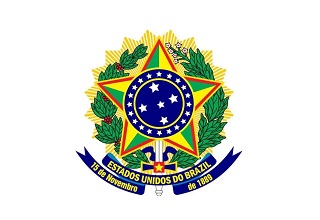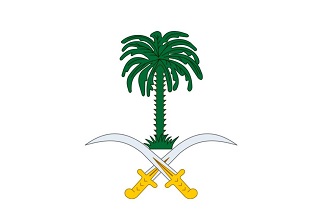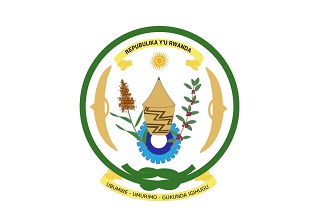Regarding the Inspection and Quarantine Requirements for Kiwiberry from New Zealand to China
1. Inspection and quarantine basis
(I) "Biosafety Law of the People's Republic of China";
(II) "Law of the People's Republic of China on Entry and Exit Animal and Plant Quarantine" and its implementing regulations;
(III) "Food Safety Law of the People's Republic of China" and its implementing regulations;
(IV) "Regulations on the Supervision and Administration of Inspection and Quarantine of Imported Fruits";
(V) "Export Plan of China Customs and New Zealand Ministry of Primary Industries on Plant Quarantine Requirements for the Export of Fresh Eating Soft kiwiberry from New Zealand to China".
2. Names of commodities allowed to enter the country
Fresh kiwiberry, scientific name Actinidia arguta, English name kiwiberry.
3. Permitted origin
New Zealand kiwiberry producing areas.
4. Approved orchards and packaging plants
Orchards and packaging plants for exporting kiwiberry to China should be reviewed and filed with the New Zealand Ministry of Primary Industries and approved for registration by China Customs. The registration information shall include the name, registration number and address (region or area) of the orchard and packing house so as to accurately trace the source when the exported goods do not comply with relevant regulations. Before the export season each year, the New Zealand Ministry of Primary Industries shall provide the list of orchards and packing houses to the Chinese Customs, which shall be published on the website of the Chinese Customs after approval and registration.
5. List of quarantine pests of concern to the Chinese Customs
(1) Cnephasia jactatana
(2) Ctenopseustis obliquana
(3) Epiphyas postvittana
(4) Planotortrix octo
(5) Planotortrix excessana
(6) Pseudococcus longispinus
(7) Neofabraea actinidiae
(8) Stathmopoda skelloni
6. Pre-export management
(I) Orchard management.
1. Orchards exporting to China should implement Good Agricultural Practices (GAP) and Integrated Pest Management (IPM), including monitoring and investigation of quarantine pests of concern to Chinese Customs, and taking necessary chemical, agricultural or biological control measures.
2. The monitoring, investigation and control of pests in orchards exporting to China should be completed under the guidance of technicians trained by officials of the New Zealand Ministry of Primary Industries or its authorized institutions. Integrated pest management measures should be approved by the New Zealand Ministry of Primary Industries and provided to the Chinese Customs upon request.
3. Orchards exporting to China should keep records of monitoring, investigation and control of quarantine pests of concern to Chinese Customs. The control records include detailed information such as the name, active ingredients, use date and concentration of all chemical agents used during the growing season, and should be provided to the Chinese Customs upon request.
4. For kiwiberry fruit rot, officials of the New Zealand Ministry of Primary Industries or their authorized personnel should take samples of soft-fruited kiwiberry for plant quarantine inspection according to the standard sampling volume of the New Zealand Ministry of Primary Industries, with a minimum sampling volume of 600 fruits. If the pathogen is found, the kiwiberry from the orchard exported to China shall not be exported to China for the rest of the export season.
(II) Packaging plant management.
1. The processing, packaging, storage and transportation of kiwiberry exported to China shall be carried out under the supervision of the New Zealand Ministry of Primary Industries.
2. Before packaging, kiwiberry should be graded, sorted and inspected to ensure that they are free of insects, mites, diseased fruits, deformed fruits, leaves, roots and soil.
3. kiwiberry exported to China should be packaged and stored separately from kiwiberry that does not meet the requirements for export to China to avoid infection with pests.
(III) Packaging requirements.
1. The packaging materials of kiwiberry exported to China should be clean, hygienic, unused and meet China's plant quarantine and hygiene requirements. If wooden packaging is used, it must comply with the requirements of International Standard for Phytosanitary Measures No. 15 (ISPM 15).
2. Each packaging box must be marked in Chinese or English with the fruit type, exporting country, orchard and registration name or number of the packaging plant. Each pallet must be marked in Chinese or English: "输往中华人民共和国" or "Exported to the People's Republic of China". The same marking must be used on packaging boxes that do not use pallets.
(IV) Pre-export inspection and quarantine.
1. The soft-fleshed kiwiberry exported to China should be subject to a sufficient level of phytosanitary inspection in accordance with the standard inspection procedures in the New Zealand export certification system to ensure that the quarantine requirements for quarantine pests of concern to the Chinese Customs are met.
2. If a phytosanitary officer approved by the New Zealand Ministry of Primary Industries or a qualified phytosanitary officer finds a living quarantine pest of concern to the Chinese Customs, the entire batch of goods shall not be exported to China. Before the New Zealand Ministry of Primary Industries finds out the cause and takes corrective measures, in some cases, the relevant orchards and packaging plants shall not export to China for the rest of this export season.
3. The New Zealand Ministry of Primary Industries approved agency must keep all inspection records and provide them to the Chinese Customs upon request.
(V) Requirements for phytosanitary certificates.
1. For the soft-fleshed kiwiberry that has passed the quarantine, the New Zealand Ministry of Primary Industries shall issue a phytosanitary certificate for it. The certificate shall indicate the orchard registration number, the packing plant registration number and the container seal number (if used). The orchard and packing plant registration numbers of each batch of goods can be marked on the phytosanitary certificate supplementary page.
2. The phytosanitary certificate shall include the following additional statement: "This consignment is in compliance with the requirements specified in the Export Plan for Export of Fresh Kiwiberry from New Zealand to China, and is free from any quarantine pests of concern to China."
7. Entry quarantine and unqualified treatment
When the soft-fleshed kiwiberry exported to China arrives at the Chinese entry port, the Chinese Customs shall implement inspection and quarantine in accordance with the following requirements.
(I) Verification of relevant certificates and labels.
1. Verify whether the imported fruit has obtained the "Entry Animal and Plant Quarantine Permit".
2. Verify whether the phytosanitary certificate complies with the provisions of Article 6, Item (V) of this Announcement.
3. Verify whether the markings on the packaging boxes and pallets (if used) comply with the provisions of Article 6, Item (3) of this Announcement.
(II) Entry Inspection and Quarantine.
1. Soft-fleshed kiwiberrys exported to China shall enter the country from ports where Chinese Customs allows the import of fruits.
2. According to relevant laws, administrative regulations, rules and other provisions, soft-fleshed kiwiberrys exported to China shall be subject to inspection and quarantine. If they pass the inspection and quarantine, they shall be allowed to enter the country.
(III) Disqualified treatment.
1. If it is found that the soft-fleshed kiwiberrys come from unregistered orchards or packaging plants, the batch of goods will not be allowed to enter the country.
2. If any quarantine pests of concern to China are found, the batch of goods will be returned, destroyed or treated for pests. Chinese Customs will immediately notify the New Zealand Ministry of Primary Industries and decide whether to suspend the import of soft-fleshed kiwiberrys from the relevant orchards and packaging plants for the rest of the export season. The New Zealand Ministry of Primary Industries should immediately conduct an investigation, find out the reasons and take corresponding improvement measures to prevent such situations from happening again. China Customs will decide whether to cancel the suspension measures based on the evaluation results of the improvement measures taken by the New Zealand Ministry of Primary Industries.
3. If other quarantine pests of concern to China Customs are found, the batch of goods will be returned, destroyed or treated. China Customs will immediately notify the New Zealand Ministry of Primary Industries, which should conduct an investigation, find out the cause and take corresponding improvement measures to avoid such a situation from happening again.
4. If it is found that the goods do not meet the national food safety standards of China, the batch of goods will be returned or destroyed.
GACC
June 25, 2024




